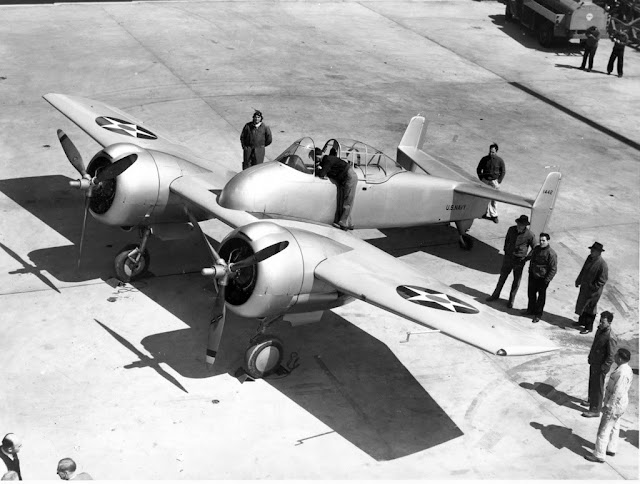Grumman XF5F-1 Skyrocket
Ordered as a prototype on 30 June 1938 by the US Navy Bureau of Aeronautics, the XF5F-1 was of radical concept. It was intended as a twin-engined shipboard fighter, and this at a time when the first single-engined shipboard fighter monoplanes were only just commencing flight test.
The Grumman G-34 proposal of 1938 for a single-seat twin-engined shipboard fighter anticipated the realization of an operational production example of such a type by quite a few years. In fact, the proposal was then considered to be so advanced that it bordered on the revolutionary; yet only four years later, on 18 April 1942,16 North American B-25 twin-engined bombers were flown off the USS Hornet to attack Tokyo.
Not only was the G-34 an advanced concept, in its original form it was a most unusual-looking aircraft, with the leading edge of its low-set monoplane wing forward of the fuselage nose. The tail unit had twin endplate fins and rudders, and the landing gear was of the retractable tailwheel type, with the main units retracting aft into the wing-mounted engine nacelles. Powerplant comprised two Wright R-1820 Cyclones, each with a three-bladed propeller, these being geared to counter-rotate to offset the effects of propeller torque.






